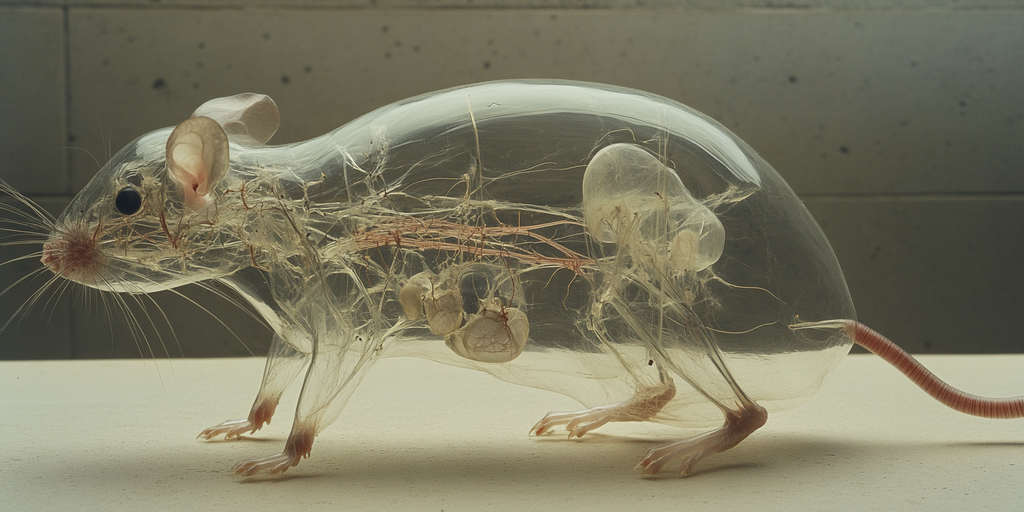Scientists have stumbled upon a somewhat bizarre discovery: a common food coloring used in snacks can temporarily turn mouse skin transparent. The dye—known as FD&C Yellow 5 or tartrazine—allows researchers to peek inside living rodents without cutting them open.
The non-invasive technique, if it can be adapted, could improve human health care.
“We found that an aqueous solution of a common food color approved by the U.S. Food and Drug Administration, tartrazine, has the effect of reversibly making the skin, muscle, and connective tissues transparent in live rodents,” the researchers reported in their study published in Science.org. “By using absorbing dye molecules, we can transform the typically opaque abdomen of a live mouse into a transparent medium.”
The see-through skin lets scientists observe internal organs and blood vessels without the need for advanced medical imaging devices. They’ve already used the chemical to watch gut neurons firing in real-time and to map out the twitches and stretches of the intestines of mice.
The transparency effect occurs due to a scientific principle called the Lorentz oscillator model, which explains how light interacts with molecules. The dye works by absorbing blue light, which alters the refractive index of water—effectively how light bends as it passes through—bringing it closer to that of fats and proteins in tissue.
This reduces light scattering, allowing red light to travel more easily through the tissue, making it functionally more transparent.
“When the refractive indices of different components in tissue match, light scattering is reduced, and the tissue appears more uniform and transparent,” the study explains.
Researchers tested the dye on fake skin first, then chicken breasts, before moving on to live mice. They made the mice’s scalps see-through to reveal brain blood vessels, turned their bellies transparent to watch digestion in action, and even rendered limbs clear enough to see individual muscle fibers.
The research team’s experiments went beyond just making tissues clear. For example, they used the technique to create time-evolving maps of the mice’s abdomen, showing the diverse movement patterns of the digestive system.
While current experiments focus on rodents, scientists are exploring potential applications in humans.
“Making veins more visible could improve the process of drawing blood or administering intravenous treatments, particularly in patients with hard-to-find veins,” the researchers suggest. The thicker human epidermis presents a challenge, but the potential is obvious.
The dye could supercharge existing light-based therapies, too. Photodynamic treatments for cancer might reach deeper tissues, and laser tattoo removal could become more efficient. Also, tartrazine is already FDA-approved for food use, which could streamline future medical applications.
As it stands, however, the process is not one to try at home.
“It could have fatal consequences for the animal and cannot be reversed,” Zihao Ou, one of the researchers behind the study, told the German news outlet Zeit.
“Before you can use it on humans, you need more toxicity studies,” Ali Ertürkm, a neuroscientist from the Helmholtz Centre for Tissue Regeneration in Munich, added.
But you don’t need a PhD to know that.

